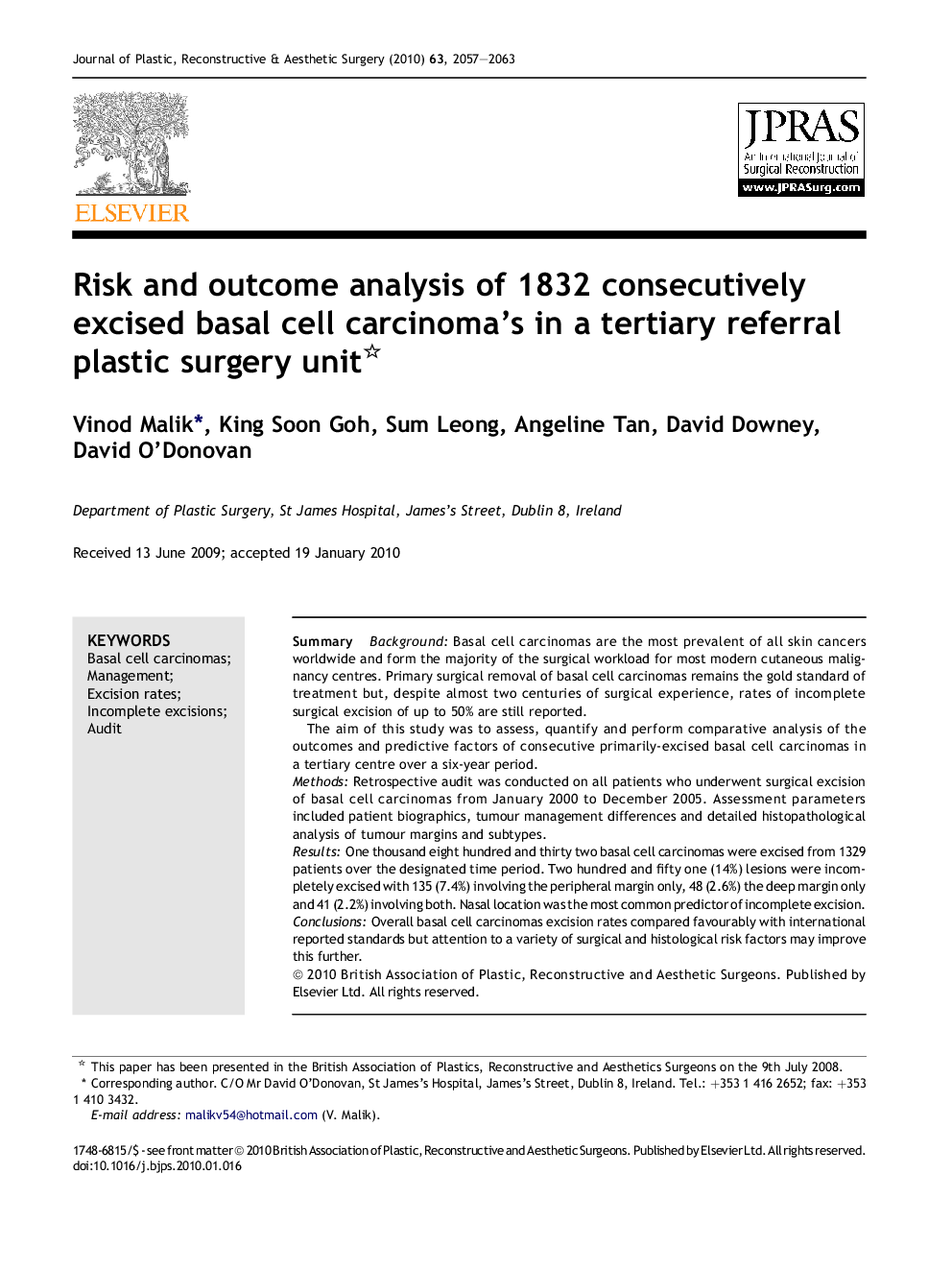| Article ID | Journal | Published Year | Pages | File Type |
|---|---|---|---|---|
| 4119372 | Journal of Plastic, Reconstructive & Aesthetic Surgery | 2010 | 7 Pages |
SummaryBackgroundBasal cell carcinomas are the most prevalent of all skin cancers worldwide and form the majority of the surgical workload for most modern cutaneous malignancy centres. Primary surgical removal of basal cell carcinomas remains the gold standard of treatment but, despite almost two centuries of surgical experience, rates of incomplete surgical excision of up to 50% are still reported.The aim of this study was to assess, quantify and perform comparative analysis of the outcomes and predictive factors of consecutive primarily-excised basal cell carcinomas in a tertiary centre over a six-year period.MethodsRetrospective audit was conducted on all patients who underwent surgical excision of basal cell carcinomas from January 2000 to December 2005. Assessment parameters included patient biographics, tumour management differences and detailed histopathological analysis of tumour margins and subtypes.ResultsOne thousand eight hundred and thirty two basal cell carcinomas were excised from 1329 patients over the designated time period. Two hundred and fifty one (14%) lesions were incompletely excised with 135 (7.4%) involving the peripheral margin only, 48 (2.6%) the deep margin only and 41 (2.2%) involving both. Nasal location was the most common predictor of incomplete excision.ConclusionsOverall basal cell carcinomas excision rates compared favourably with international reported standards but attention to a variety of surgical and histological risk factors may improve this further.
